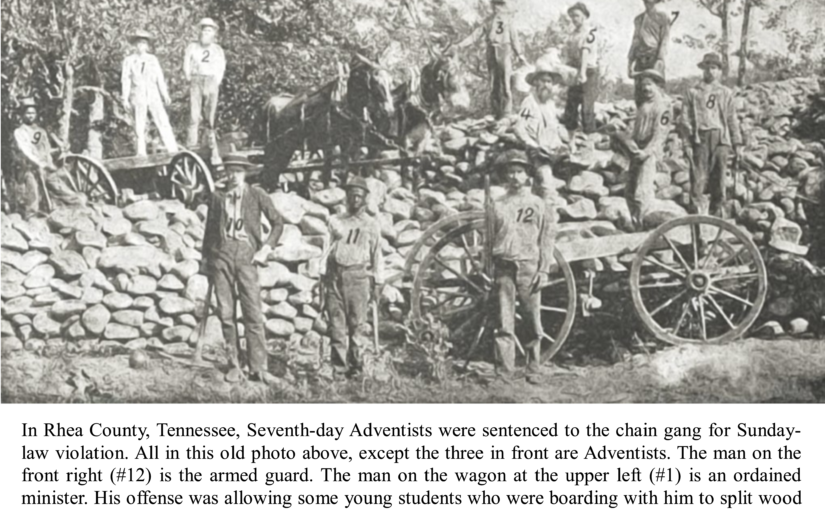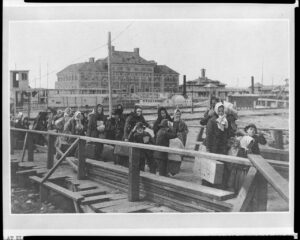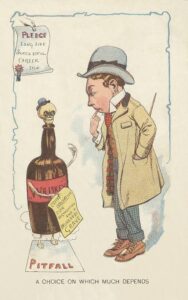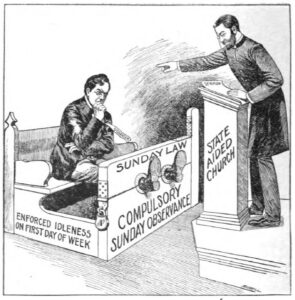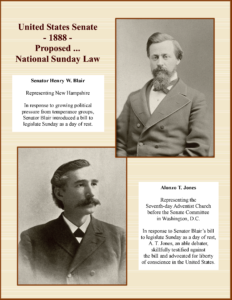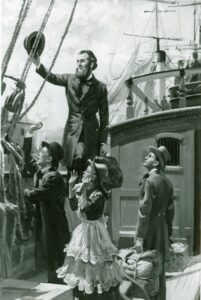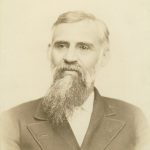Back to 1888 General Conference
Seventh-day Adventists in America in 1888
What’s of interest to Seventh-day Adventists in America?
Throughout the 1880s, an influx of immigrants with differing lifestyles led to concerns that the traditional American Puritan Christian lifestyle was being threatened – issues such as alcohol consumption and the “sacredness” of Sunday “Sabbath” were of special concern.
Led by groups such as the American Temperance Society and Woman’s Christian Temperance Union, the temperance movement became a growing political force throughout the 1800s – such groups often also advocated passage of Sunday laws.

Most states already had Sunday laws but temperance groups now petitioned for a national Sunday law. In the U.S. (with a census of approximately 60 million people at the time), about 15 million signatures were obtained on petitions for a national Sunday law – the spirit of moral legislation was in the air!
On May 21, 1888, Senator Henry William Blair from New Hampshire introduced a bill in the U.S. Senate with the intention “To secure to the people the enjoyment of the first day of the week, commonly known as the Lord’s Day, as a day of rest, and to promote its observance as a day of worship.”
In opposition to the national Sunday law, one of the chief spokesmen against such a law was Adventist leader, Alonzo T. Jones, who skillfully testified for religious freedom in America.
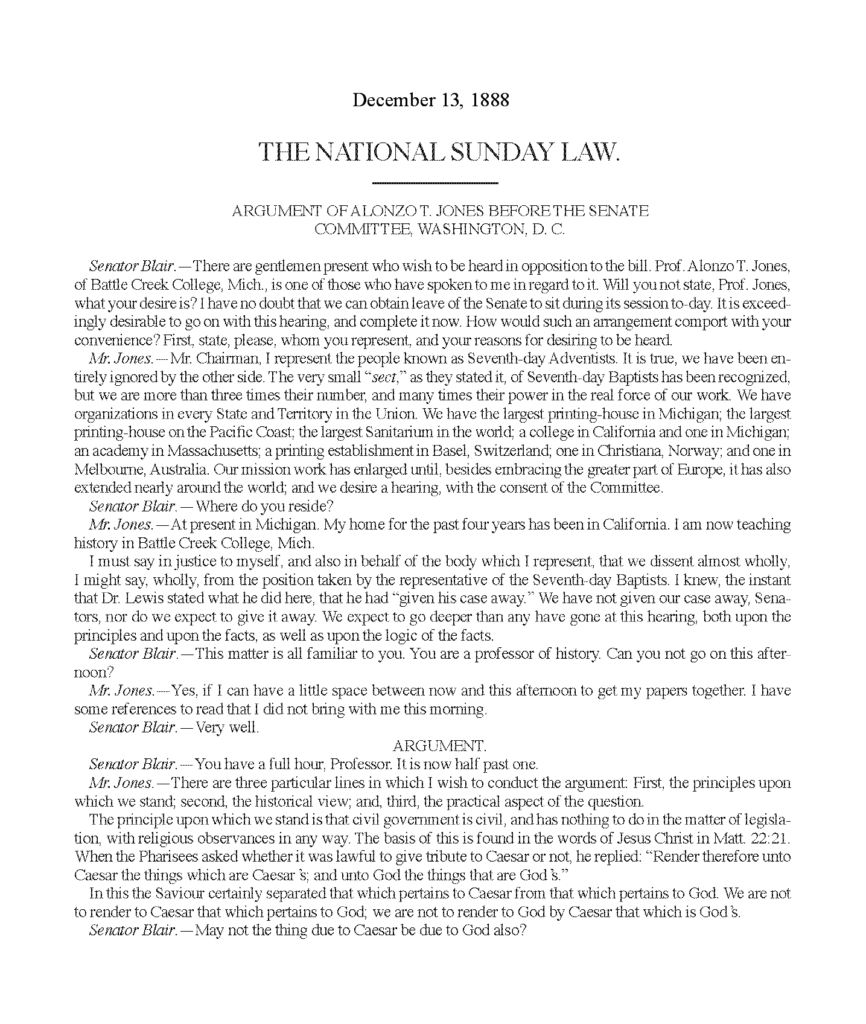
What’s happening in the Seventh-day Adventist Church?
By 1888 the Seventh-day Adventist Church had its doctrinal/prophetic platform in place, it had organized to facilitate its preaching of the three angels’ message, and it had developed a world-wide ministry and distinctive lifestyle.
The focus of the Seventh-day Adventist message was on its uniqueness and the mission of converting other Christians to the Adventist message – little was said about beliefs (such as righteousness by faith) that were held in common with other Christian churches.
Other Christian churches came to view Seventh-day Adventists as “problems”, especially in their drive to protect “the Lord’s day” (i.e. Sunday).
In 1882, local California authorities arrested W. C. White, the youngest son of James and Ellen, for operating the Pacific Press on Sunday.
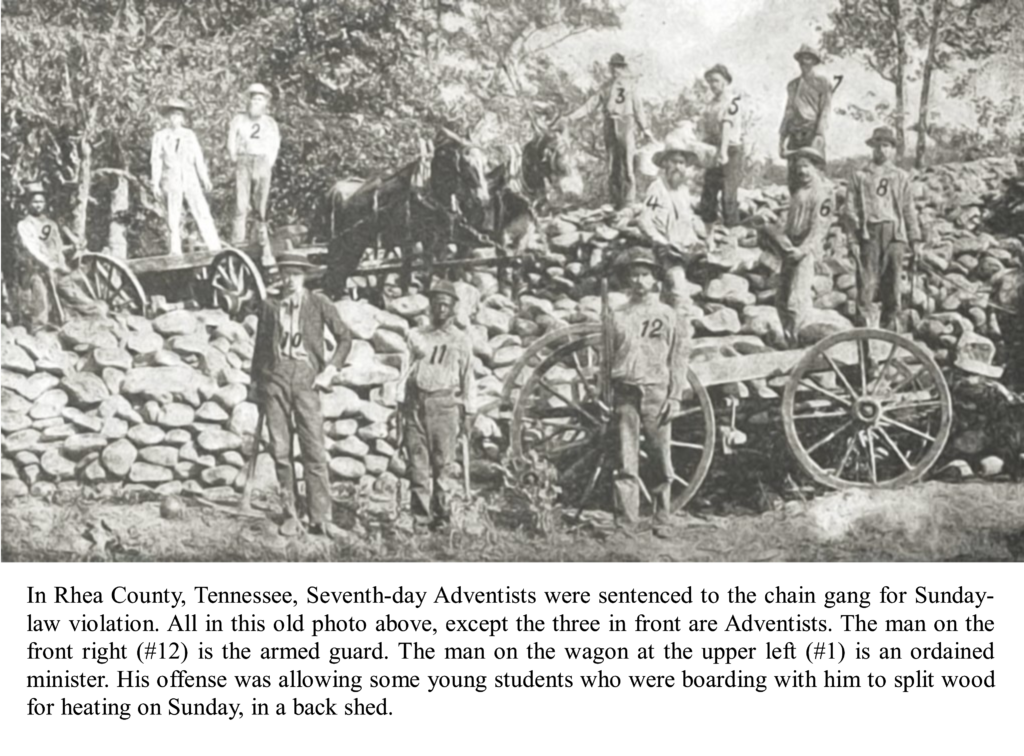
Photo: EarlyAdventist.com
By 1885, Adventists were being arrested in Arkansas, and, by 1888, the problem had spread to Tennessee and other states. In the next few years some Adventist ministers served on chain gangs with common criminals. Their crime: Sunday desecration.
With prophecy unfolding, this was obviously the time for all Seventh-day Adventists to pull together and complete the work on this planet … but … there’s contention …
~~~~~~~~~~~~~~~
… between Uriah Smith, Review and Herald Editor and Adventism’s foremost scholar and author on prophecy, united with George I. Butler, General Conference President, on one side …
… and Alonzo T. Jones, American Sentinel Editor (a religious liberty magazine) and joint Editor of Signs of the Times, united with Elliot J. Waggoner, joint Editor of Signs of the Times, on the other side …
That contention will lead the Seventh-day Adventist Church through some of it’s most tumultuous times, with leader Ellen G. White stating it was “the saddest experience of my life.”
(Endnotes E. G. White Manuscript 21, 1888)
